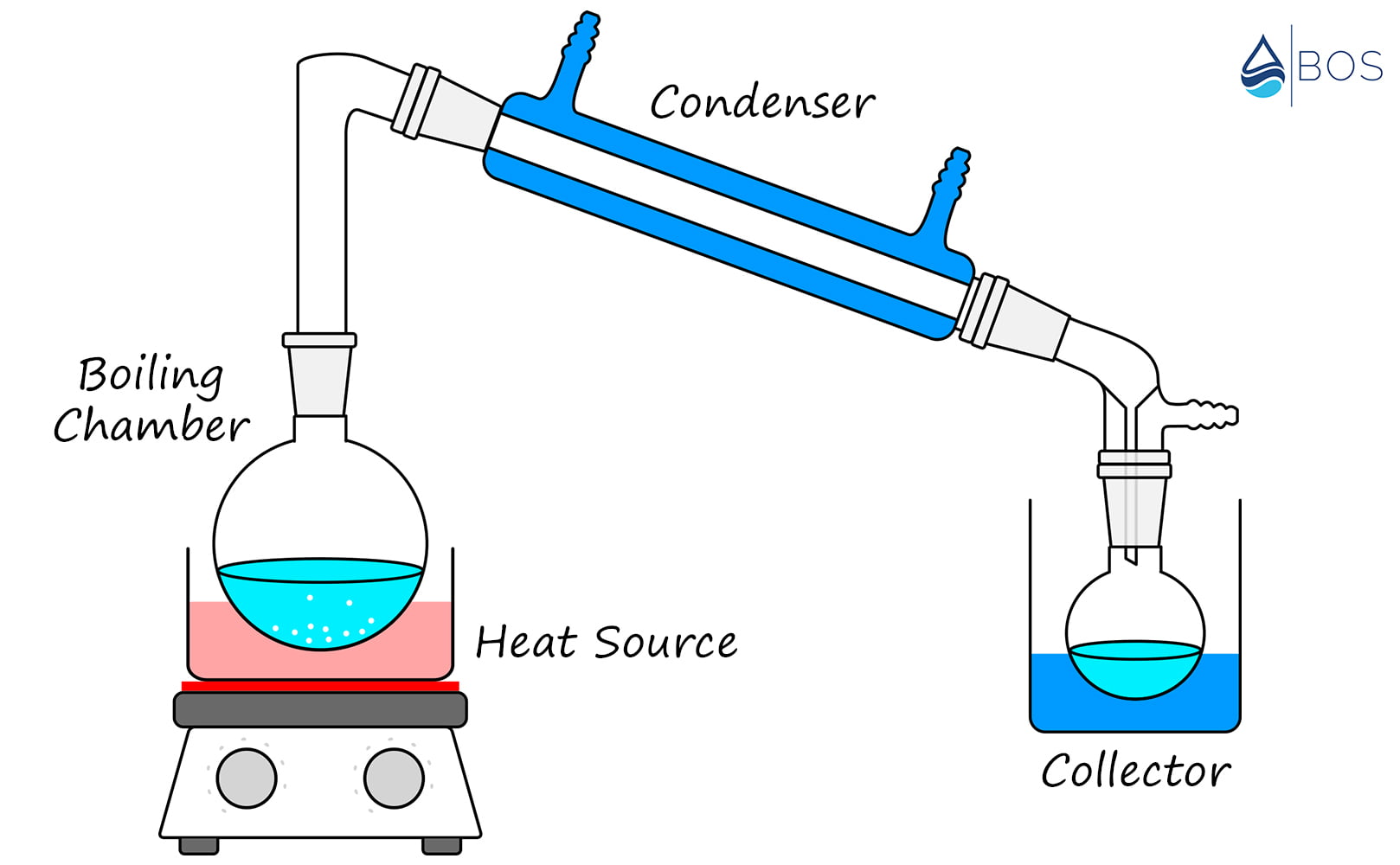Does Distilling Water Remove Fluoride and Chlorine?
Written by: Gene Fitzgerald // Last Updated: Aug 15, 2023
This page may contain affiliate links. If you buy a product or service through such a link we earn a commission at no extra cost to you. Learn more.
Distilling is considered to be the most effective method to almost completely purify water. It is capable of removing 99% of impurities from any kind of source water and is a gold standard in water purification.
But does distilling water also remove fluoride and chlorine?
Find the answer here! We will take you through the process, and the pros and cons of having a distiller in your home as your water treatment system.
Key Takeaways
- Distilling water removes both fluoride and chlorine, along with most other water contaminants and impurities.
- Fluoride is simply left behind in the boiling chamber. Chlorine being highly volatile leaves with the water steam, so it needs to be filtered out using activated carbon.
Does Distilling Water Remove Fluoride and Chlorine?
Yes, water distillation removes both fluoride and chlorine.
Chlorine, however, is a volatile gas, which leaves with the steam during the boiling process. For this reason, most distillers will have an inbuilt fan to blow those gasses out, as well as activated carbon filter sachets that the steam will pass through before it is collected. This ensures there is no chlorine present in the purified water.
As for the fluoride, it will remain in the boiling chamber.
How Does Distilling Water Remove Chlorine and Fluoride?
How a Water Distiller Works
Simply put, a distiller first heats water to boiling point. As steam releases from the water, it exits the boiling chamber and hits the cooling coils, which turn the steam back into purified water. This is then collected in a separate chamber. Harmful contaminants that have a boiling point of more than 212 degrees stay in the kettle.
Water distillers are really easy to use and maintain. Simply fill one with water, plug it in, and wait the 4-6 hours it takes to purify one gallon of water.
The Pros and Cons of Using Water Distillation for Chlorine/Fluoride Removal
Pure H2O
A distiller is a gold standard in water purification, with the ability to remove 99.9% of impurities.
Installation-Free
Zero installation is required for a standard home distiller, you simply plug it in and fill the chamber, a really great plus if you don’t consider yourself very handy around the home.
Ease of Use
Water distillers are extremely easy to use. There is no need for filter changes or maintenance either. Cleaning occasionally is about all that needs to be done.
No Wastewater
No wastewater is produced during distillation treatment, which is one of the disadvantages of an RO system. As you will no longer be drinking bottled water, plastic waste can be minimized too.
Compact System
A water distiller does not take up a lot of counter space and is able to be easily moved around as needed.
Slow
The main downside of this process is that it can take a long time, approximately 4-6 hours for one gallon of water. Storing some water in a separate container is recommended.
Lack of Minerals
Distillation does remove good minerals from your water as well as bad, such as calcium and magnesium. If this is a concern, remineralization is recommended.
Other Impurities and Contaminants Removed from Water by Distillation
Along with fluoride and chlorine, distillation also removes metals such as lead and iron, and salts like nitrate. Chemicals including PFAS will be removed, too. The boiling process also kills microorganisms such as bacteria and some viruses.
Basically, anything that’s not H2O will be eliminated.
Contaminants That Are Not Removed
Distilled water may still contain trace amounts of the original water impurities after distillation, usually under 1%. Some pesticides, solvents, and volatile organic compounds (VOCs), such as benzene and toluene will not be completely removed unless another process is used prior to condensation.
If the distiller is idle for an extended period, it is possible that bacteria may make their way back in from the spigot and recontaminate the water.
If you have any thoughts about the question, does distilled water have fluoride and chlorine, please don’t hesitate to leave a comment below!
Information provided on BOS is for educational purposes only. The products and services we review may not be right for your individual circumstances.
We adhere to strict editorial guidelines. Rest assured, the opinions expressed have not been provided, reviewed, or otherwise endorsed by our partners – they are unbiased, independent, and the author’s alone. Our licensed experts fact-check all content for accuracy. It is accurate as of the date posted and to the best of our knowledge.


